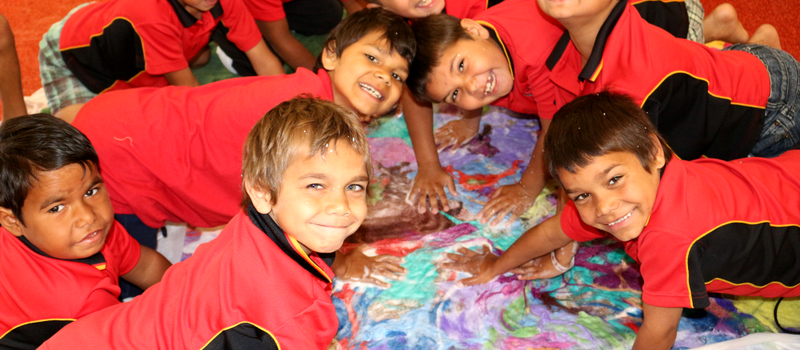Who needs the Internet of Things? Not this interactive, sound playback blanket! Instead, hidden within its soft fuzzy exterior, it makes use of a NRF24L01+ module to speak directly with its sound server.
The project was built for a school, and let the students record whatever sounds they think are important into a Raspberry Pi. Then, the students assembled the physical felt blanket, with the sensors sewn inside, and could play back their favorite sounds by clambering all over the floor. It’s a multi-sensory, participatory, DIY extravaganza. We wish we did cool stuff like that in grade school.
What? Your “blankie” doesn’t transmit data to a Pure Data application? Well, [Dan Macnish] is here to help you change that. This well-written entry on Hackady.io describes the setup that he used to make the blanket’s multiple touch sensors send small packets over the air, and provides you with the Pd code to get it all working on GitHub..
 We like DIY music controllers a lot, and this simple setup stands to be more useful than just blanket-making. And in this age of everything-over-WiFi, it’s refreshing to see a straight-up 2.4 GHz radio build when that’s all that was necessary.
We like DIY music controllers a lot, and this simple setup stands to be more useful than just blanket-making. And in this age of everything-over-WiFi, it’s refreshing to see a straight-up 2.4 GHz radio build when that’s all that was necessary.
[Dan]’s complaint that the NRF24 modules could only reach 3m or so strikes us as strange though. Perhaps it’s because of all of the metal in close proximity to the NRF24’s antenna?

















Yes, it’s because of the metal close to the antenna. And while you are at it, move those cables away aswell. I have reached 200m+ range with these chips. I have not used these modules though.
Yep, the bolts need to be nylon and the cable needs to go the other way. I have gotten 100m from ESP01 modules which are very similar in aspect, though wifi instead of NRF. When using these postage stamp PCB antennas you must keep them away from stuff that shorts out the radio waves.
Thanks heaps for pointing that out – This was one of my first attempts at wireless transmission, so I was (and still am) pretty ignorant of RF design principles. Anyone with wireless experience would likely cringe at that photo… shame, oh shame!
No cringe here anyway. I see a fun and cool project by an enthusiast with little experience in rf-design. Keep doing awesome! Doing is how to gain experience.
Lol when I first glanced at the pic I thought it was a strain gauge :o
HE should consider putting hsi own antenna on the NRF boards.
Dipole: https://hackaday.com/2015/08/15/hacking-a-nrf24l01-radio-for-longer-range/
Monopole: https://www.youtube.com/watch?v=NpMnauHeR7Y
“This well-written entry on Hackady.io describes the setup that he used” – What well-written entry? Only link I see is to a wordpress page with pictures of the blanket, unless I’m missing something here. Wrong link maybe?
So sorry. Link slipped through the editing. It’s back in.
Cool, but expose them to an actual instrument or many. Just hitting play over and over is not creative.
Don’t be daft. The deliberate group manipulation of the blanket makes for social and organisation skills as well as just music. Locking the students into a single tool (an instrument, even many) forces them into a far more complex system than musical twister blanket does, and is likely to demotivate any children that do not have the family support of being forced to play an instrument.
Dan, if you read this, good work!
Thanks for the encouragement, I appreciate it! You’re absolutely right, introducing musical instruments could have been daunting for some kids. Our limiting factor was really time – we had a week to work with 75 kids, so most of their time was spent making the blanket and coming up with/recording sounds.
Using the sensors to manipulate sounds (in the fashion of an instrument) would have been worth exploring if we had three or four weeks rather than one. Next year perhaps?